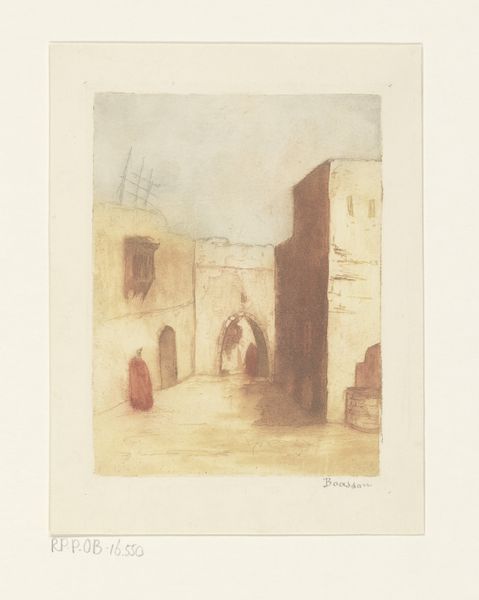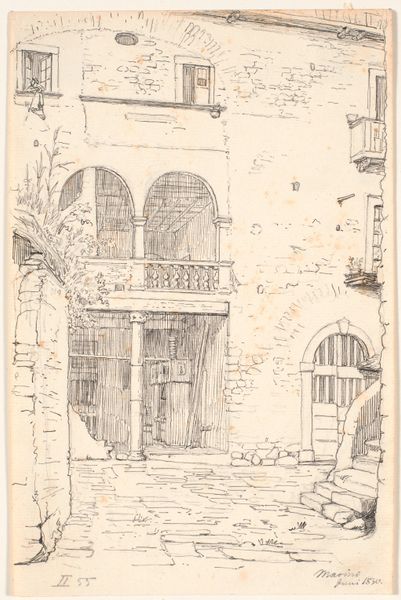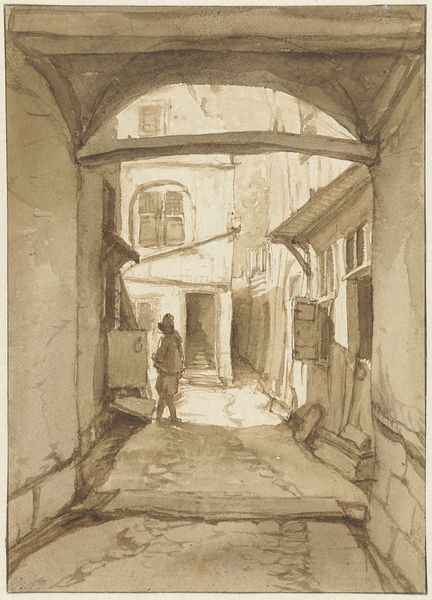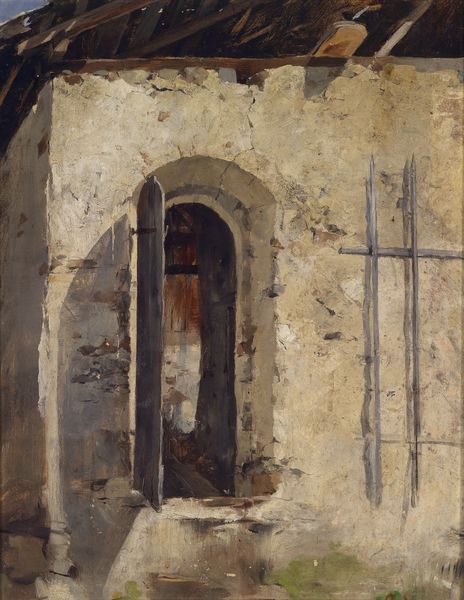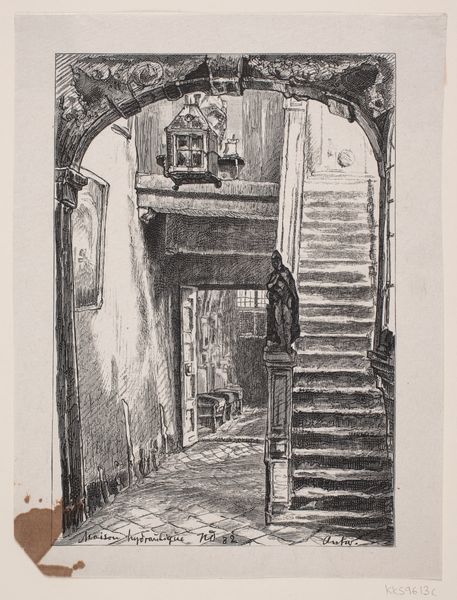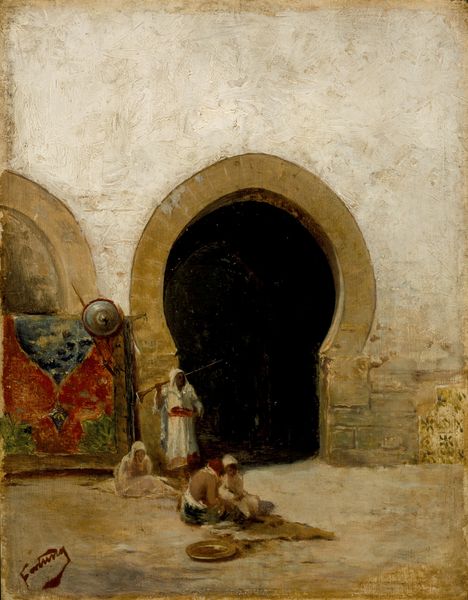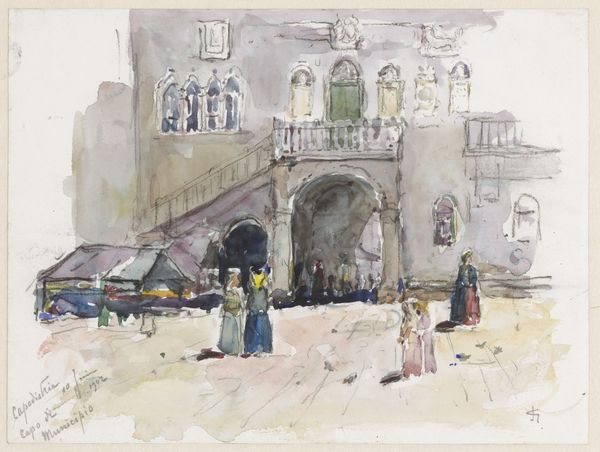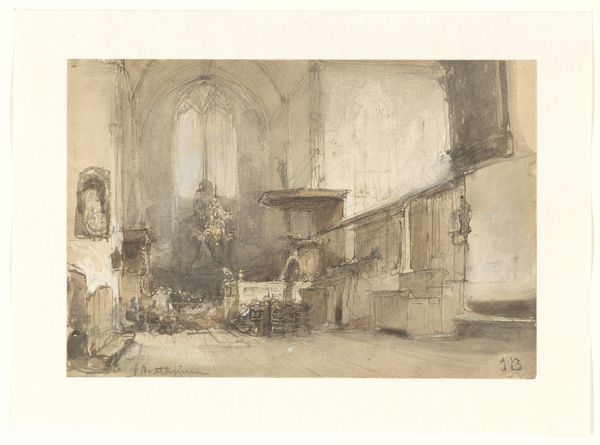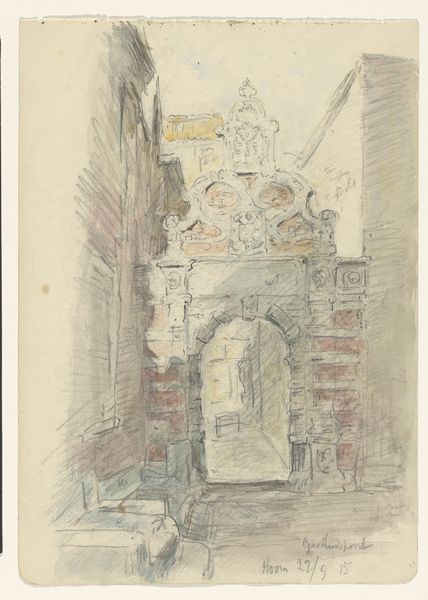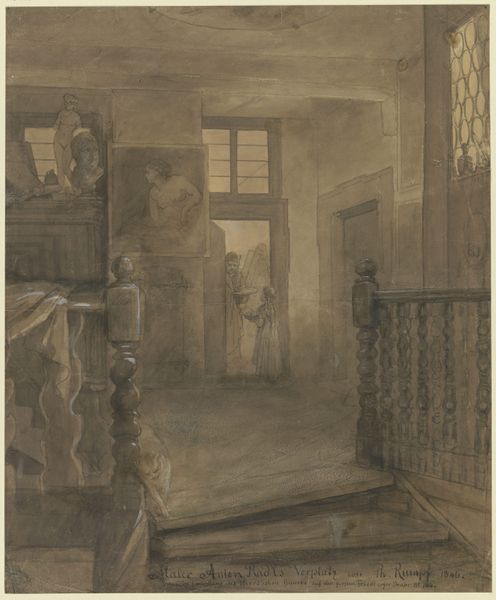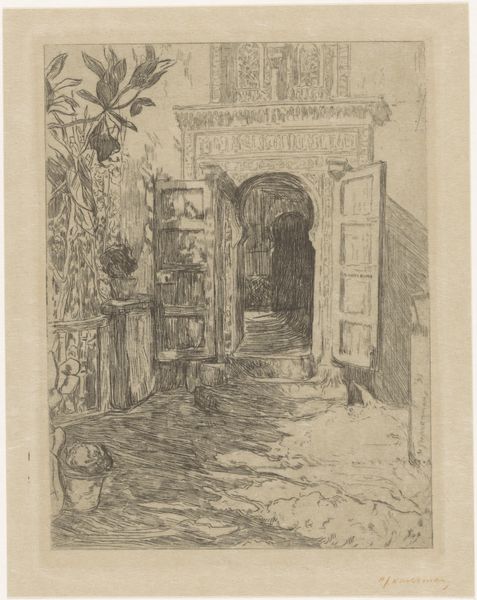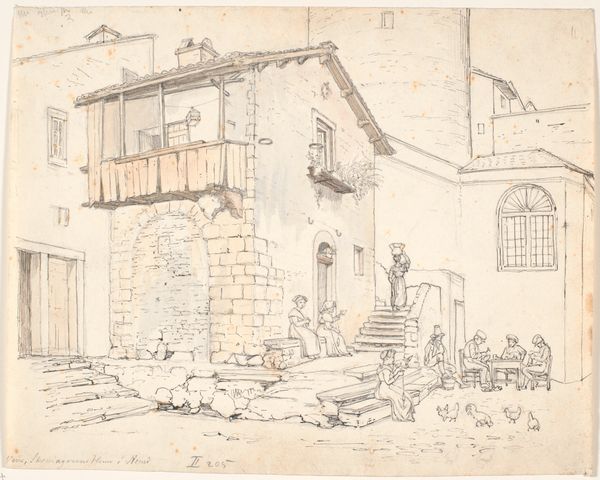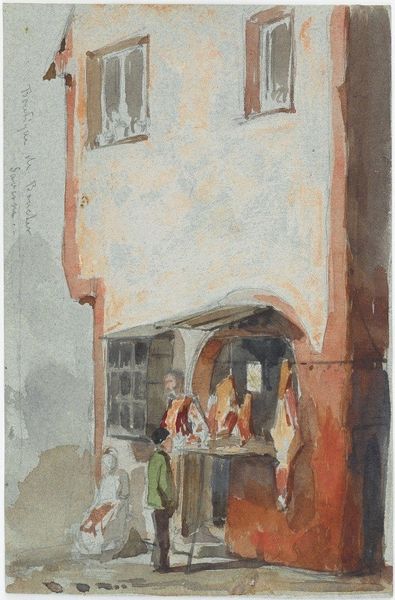
Straattafereel met oosters geklede vrouwen te Chioggia 1888
0:00
0:00
mixed-media, coloured-pencil
#
mixed-media
#
coloured-pencil
#
impressionism
#
landscape
#
coloured pencil
#
genre-painting
#
mixed medium
#
mixed media
#
watercolor
#
realism
Dimensions: height 251 mm, width 235 mm
Copyright: Rijks Museum: Open Domain
Editor: So, this is "Straattafereel met oosters geklede vrouwen te Chioggia," or "Street Scene with Women in Oriental Dress in Chioggia," created by Carel Nicolaas Storm van 's-Gravesande in 1888 using mixed media. It's… quiet, somehow. Despite the title suggesting a bustling street scene, it feels very contained. What stands out to you? Curator: The "Oriental" dress immediately catches my eye. Think about what that signifies in 1888 – a fascination, certainly, but also perhaps an exoticization, a “costuming” of the everyday. The clothing becomes a signifier, loaded with the West's ideas about the East. Does it feel genuine, or posed, to you? Editor: It feels a bit staged, like they're not really engaging with their environment. Almost like they are trying too hard. Curator: Exactly. This points to a specific cultural lens. The artist isn’t simply documenting; they’re participating in a long tradition of representing “the other.” Consider the use of the archway: is it framing them like a painting, distancing the viewer from the "Orient"? How does this choice impact the scene's authenticity, do you think? Editor: That’s a great point. It’s like we are peering in. It creates this separation that makes it more like an observation than an immersion. The clothes carry extra meaning now. Curator: Indeed. Those visual cues—the clothing, the architecture, the viewpoint— speak volumes about how cultures perceive and portray each other. Storm van 's-Gravesande presents Chioggia, but filtered through his own understanding and expectations. It becomes a projection. Editor: This makes me think differently about how artists choose their subjects. What appears objective on the surface, clearly has layers of interpretation embedded in it. Curator: Precisely. Recognizing those layers is key to understanding not just the artwork, but also the cultural exchange and historical context it represents. I have a new appreciation for how even seemingly simple images carry such profound cultural baggage.
Comments
No comments
Be the first to comment and join the conversation on the ultimate creative platform.
